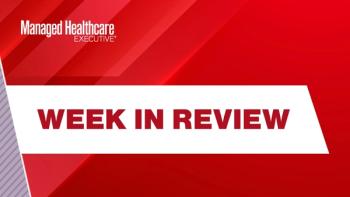
Commission draws blueprints for states
The new State Health Care Cost Containment Commission aims to create practical solutions for states to manage today’s crushing healthcare costs.
While there is seemingly no end to the number of leadership groups that hope to influence healthcare delivery, a new commission has emerged with more credibility than the average think tank.
Committee roll call for the State Health Care Cost Containment Commission reads like a who’s who with former governors, a former secretary of Health and Human Services, health system CEOs and health plan CEOs all in attendance. Their goal, they say, is to create practical solutions for states to manage today’s crushing healthcare costs.
States are in a situation where they must cut other programs such as education and infrastructure to maintain healthcare services, says Mike Leavitt, former Utah governor and former secretary of the Department of Health and Human Services.
He speaks of his own experiences.
“Medicaid was a low single digit item, but is now in the state where I governed, like in most states, 20% of the budget,” he says.
Leavitt says the reasons to effect healthcare cost containment at the state level include the fact that:
• States can act as laboratories for national policy change;
• Most states will be operating their own insurance exchanges with an eye on costs; and
• One-third of individuals receiving care over the next several years will be covered by a state or state entity.
The pressure on state governors to control costs is high and certain to increase.
George Halvorson, outgoing CEO of Kaiser Permanente, says the commission will produce comprehensive blueprints that states can adapt to their own environments.
“It’s important to have a continuum of options that have appeal across the political spectrum,” Halvorson says.
Specifically, the tool kits will include a framework for innovative payment mechanisms such as bundled payment, accountable care and pay for performance. Halvorson says states must also examine malpractice policy and ways to facilitate providers’ sharing of best practices and clinical knowledge.
In some cases, the commission’s solutions might lead to policy changes at state levels enacted by state law or executive orders, he says.
However, the task at hand is to sketch out solutions for states-not the federal government. Raymond Scheppach, former executive director of the National Governors Assn., who will direct the project, says committees won’t examine entitlement, for example, but might make recommendations that reinforce state efforts.
“A lot of states have asked for all-payer data from Medicare and have not been able to get it,” he says. “Since they’re such a large payer, it’s important that that happen.”
Halvorson says the commission is unlikely to arrive at “academic” solutions or theoretical recommendations because the participants themselves are currently working in the real world of healthcare and cost growth. Many come from the private market where they design and test policies in the business setting.
The commission will produce recommendations by November then work with state and regional organizations to put the tools to use.
“The national debate about healthcare reform has occurred principally at the federal level, and that national debate, while it continues, is somewhat settled,” says Andrew Dreyfus, president and CEO of Blue Cross Blue Shield of Massachusetts. “The locus of activity increasingly will turn to the states.”
Newsletter
Get the latest industry news, event updates, and more from Managed healthcare Executive.

















































